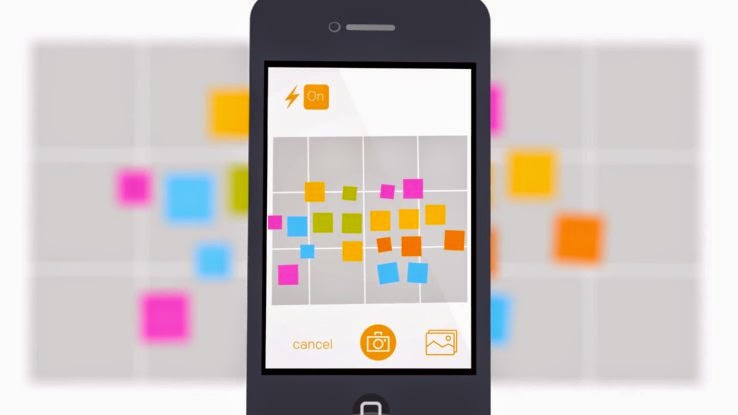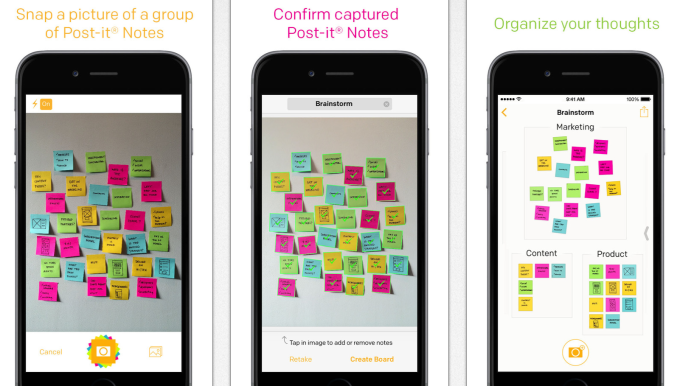iPhone 6 Bendgate: Apple's Instructions Say Not to Keep Your Phone in Your Pocket Anyway

As the Internet lights up with images of the iPhone 6 plus emerging from people’s pockets bent like a used paperclip, it may be useful to consider this: Apple explicitly tells you not to carry your phone in your pocket, due to the radiation exposure threat it poses.
In the little handbook that comes with every iPhone (the one that gets discarded almost immediately because, it’s a cell phone, we all know what to do with those, right?) Apple also explicitly states that the phone is not supposed to touch your body much, if at all.
In fact, in the manual for the iPhone 5, Apple says users should carry their iPhones a full 10 millimeters (or .39 inches) away from their bodies at all times. That means, if the device is in the pocket of your jeans, it’s much too close.
Previous manuals were more explicit. The iPhone 3G safety manual warns that radiation exposure may exceed government standards during “body-worn operation” if the phone is “positioned less than 15 millimeters (5/8 inch) from the body (e.g., when carrying iPhone in your pocket).” The iPhone, Apple says, should always be worn in a belt clip or holster.
Cell phone radiation, measured in radio-frequency exposure, is regulated in the U.S. by the Federal Communications Commission (FCC). All phones must be tested to ensure that they emit a specific absorption rate of not more than 1.6 watts of radio-frequency energy per kilogram of body tissue, a rule designed to prevent harm from the heat generated by radio-frequency waves.
But while cell phones are tested against a simulated human head in the “talking” position, they are not tested against the body (or in a pocket) in the “carrying” position. Instead, the tests assume the user is carrying the phone in a holster, away from the body, whenever the phone is broadcasting at full power. And since radio-frequency energy exposure increases sharply the closer the phone gets to your body, some worry that FCC testing is missing a lot of actual exposure.
In addition, the FCC tests do not consider biological effects caused by anything other than the heat generated from radio-frequency energy, like altered protein expression or DNA damage. Experts and organizations like the Environmental Working Group have expressed concern over the testing rules for cell phones, citing studies that show links between cancers and cell phone radiation exposure. In 2011, a World Health Organization report classified radiation from cell phones as “possibly carcinogenic to humans,” particularly as cell phone use relates to an increased risk for glioma, a malignant type of brain cancer.
Then there are the gaps in cell phone radiation testing. The American Academy of Pediatrics, for example, recently urged the FCC to begin taking child users of cellphones into account. “Children are not little adults and are disproportionately impacted by all environmental exposures, including cell phone radiation,” their letter to the FCC reads.
Yet the science is inconclusive. The National Cancer Institute points to several studies that have been unable to establish a relationship between cell phone use and cancer.
The FCC is currently conducting an ongoing reassessment of its policies.
"The U.S. has among the most conservative standards in the world. As part of our routine review of these standards, which we began last year, we will solicit input from multiple stakeholder experts, including federal health agencies and others, to guide our assessment,” a spokesman for the FCC tells Newsweek.
Radiation from cell phones is not an Apple-only problem, of course. Blackberry’s user manual advises .59 inches of separation between the body and the phone. Earlier manuals pushed for nearly a full inch (.98 inch) of separation, and told users to "use hands-free operation if it is available and keep the BlackBerry device at least 0.98 inch (25 millimeters) from your body (including the lower abdomen of pregnant women and teenagers)."
A manual for an earlier Blackberry model—the 8830 World Edition—includes a warning against carrying the phone directly on the body: “Carrying solutions, including RIM-approved carrying solutions and carrying solutions not approved by RIM, that do not come equipped with an integrated belt clip SHOULD NOT be worn or carried on the body.”
It adds that users should not try to use the phone where there is not a good signal, because radiation output grows higher and higher as the phone struggles to connect with a tower. Neither Apple nor Blackberry responded to a request for comment at the time of publishing.
Dr. David Carpenter, the director of the Institute for Health and the Environment University at Albany, New York has spent several years reading research on radio-frequency exposure and has testified to Congress on the subject. He says he is very wary of cell phones.
“My personal sense is that the evidence for increases in cancer is quite strong. It’s not one hundred percent, but most studies have shown that [people with] high exposures have elevations in leukemia, brain cancers [and] some other kinds of cancers.”
He predicts that cancer rates will go up in the coming decades.
“Latency for brain cancer is 20 to 30 years. Cell phones haven’t been around for all that long. I think it’s likely that we’ll see an increase in cases over the next years,” Carpenter says.
In the little handbook that comes with every iPhone (the one that gets discarded almost immediately because, it’s a cell phone, we all know what to do with those, right?) Apple also explicitly states that the phone is not supposed to touch your body much, if at all.
In fact, in the manual for the iPhone 5, Apple says users should carry their iPhones a full 10 millimeters (or .39 inches) away from their bodies at all times. That means, if the device is in the pocket of your jeans, it’s much too close.
Previous manuals were more explicit. The iPhone 3G safety manual warns that radiation exposure may exceed government standards during “body-worn operation” if the phone is “positioned less than 15 millimeters (5/8 inch) from the body (e.g., when carrying iPhone in your pocket).” The iPhone, Apple says, should always be worn in a belt clip or holster.
Cell phone radiation, measured in radio-frequency exposure, is regulated in the U.S. by the Federal Communications Commission (FCC). All phones must be tested to ensure that they emit a specific absorption rate of not more than 1.6 watts of radio-frequency energy per kilogram of body tissue, a rule designed to prevent harm from the heat generated by radio-frequency waves.
But while cell phones are tested against a simulated human head in the “talking” position, they are not tested against the body (or in a pocket) in the “carrying” position. Instead, the tests assume the user is carrying the phone in a holster, away from the body, whenever the phone is broadcasting at full power. And since radio-frequency energy exposure increases sharply the closer the phone gets to your body, some worry that FCC testing is missing a lot of actual exposure.
In addition, the FCC tests do not consider biological effects caused by anything other than the heat generated from radio-frequency energy, like altered protein expression or DNA damage. Experts and organizations like the Environmental Working Group have expressed concern over the testing rules for cell phones, citing studies that show links between cancers and cell phone radiation exposure. In 2011, a World Health Organization report classified radiation from cell phones as “possibly carcinogenic to humans,” particularly as cell phone use relates to an increased risk for glioma, a malignant type of brain cancer.
Then there are the gaps in cell phone radiation testing. The American Academy of Pediatrics, for example, recently urged the FCC to begin taking child users of cellphones into account. “Children are not little adults and are disproportionately impacted by all environmental exposures, including cell phone radiation,” their letter to the FCC reads.
Yet the science is inconclusive. The National Cancer Institute points to several studies that have been unable to establish a relationship between cell phone use and cancer.
The FCC is currently conducting an ongoing reassessment of its policies.
"The U.S. has among the most conservative standards in the world. As part of our routine review of these standards, which we began last year, we will solicit input from multiple stakeholder experts, including federal health agencies and others, to guide our assessment,” a spokesman for the FCC tells Newsweek.
Radiation from cell phones is not an Apple-only problem, of course. Blackberry’s user manual advises .59 inches of separation between the body and the phone. Earlier manuals pushed for nearly a full inch (.98 inch) of separation, and told users to "use hands-free operation if it is available and keep the BlackBerry device at least 0.98 inch (25 millimeters) from your body (including the lower abdomen of pregnant women and teenagers)."
A manual for an earlier Blackberry model—the 8830 World Edition—includes a warning against carrying the phone directly on the body: “Carrying solutions, including RIM-approved carrying solutions and carrying solutions not approved by RIM, that do not come equipped with an integrated belt clip SHOULD NOT be worn or carried on the body.”
It adds that users should not try to use the phone where there is not a good signal, because radiation output grows higher and higher as the phone struggles to connect with a tower. Neither Apple nor Blackberry responded to a request for comment at the time of publishing.
Dr. David Carpenter, the director of the Institute for Health and the Environment University at Albany, New York has spent several years reading research on radio-frequency exposure and has testified to Congress on the subject. He says he is very wary of cell phones.
“My personal sense is that the evidence for increases in cancer is quite strong. It’s not one hundred percent, but most studies have shown that [people with] high exposures have elevations in leukemia, brain cancers [and] some other kinds of cancers.”
He predicts that cancer rates will go up in the coming decades.
“Latency for brain cancer is 20 to 30 years. Cell phones haven’t been around for all that long. I think it’s likely that we’ll see an increase in cases over the next years,” Carpenter says.


.jpg)










.jpg)
















